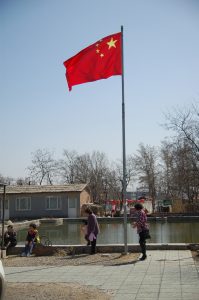
In a major development for the global Intellectual Property ecosystem, China joined the Hague System for the International Registration of Industrial Designs on 5 February 2022. This accession will enter into force on 5 May 2022. Following Belarus and Jamaica, the world’s second largest economy has just joined this Union which aims to facilitate the international registration of designs.
Joining a system to facilitate access to design protection
The Hague System was set up to facilitate the protection of industrial designs internationally, through a simplified filing system with a single office: The World Intellectual Property Organization (WIPO). Currently, 76 contracting parties are members of the system, bringing together 93 countries, including France, the European Union, the US, but also many countries in Africa, Asia and Eastern Europe. Given the importance of the appearance of a product, many countries have ratified the Hague Agreement in recent years. China has become the 77th contracting party to the Agreement.
Registering designs with WIPO allows them to be protected in the chosen countries – provided they have actually joined the Hague system – by paying a fee for each requested country. It is therefore not, strictly speaking, an international protection, as each title remains valid only in the concerned territory. Similarly, all acts relating to the protection of the design (registration, renewal) will be carried out in a single procedure.
The consequences of such accession
From now on, all Chinese designers will be able to benefit from the international design system. It is faster and less costly, and limits formalities by providing for a single filing covering up to 100 designs. As for foreign designers, they will have an easier access to the Chinese market, the world’s largest design application market. In 2020, the Chinese Intellectual Property Office received applications containing some 770,362 designs, which represents about 55% of global design applications. By comparison, there were “only” 113,196 EUIPO design filings.
However, the sole registration of a design with WIPO does not guarantee its protection in all the countries requested. WIPO then notifies the offices of all the designated States for an examination specific to each legislation. It is therefore necessary to pay particular attention to the conditions for protection. For example, in France: novelty, specific character and visibility of the design!
In order to file an application for design protection, French legislation provides for a grace period of 12 months following the first disclosure of the design. China, on the other hand, requires absolute novelty. It will therefore be necessary to pay attention to the specific protection conditions in certain countries in order to optimize the protection of a design internationally.
China’s accession to the Hague Agreement is therefore a real step forward in the homogenization of design registration. China has thus become the 77th contracting party to the Hague Agreement and gives hope that other highly innovative States will soon join in.
See also…
♦International designs: why has Belarus ratified the Hague Agreement?
♦International designs: South Korea ratifies the Hague Agreement
